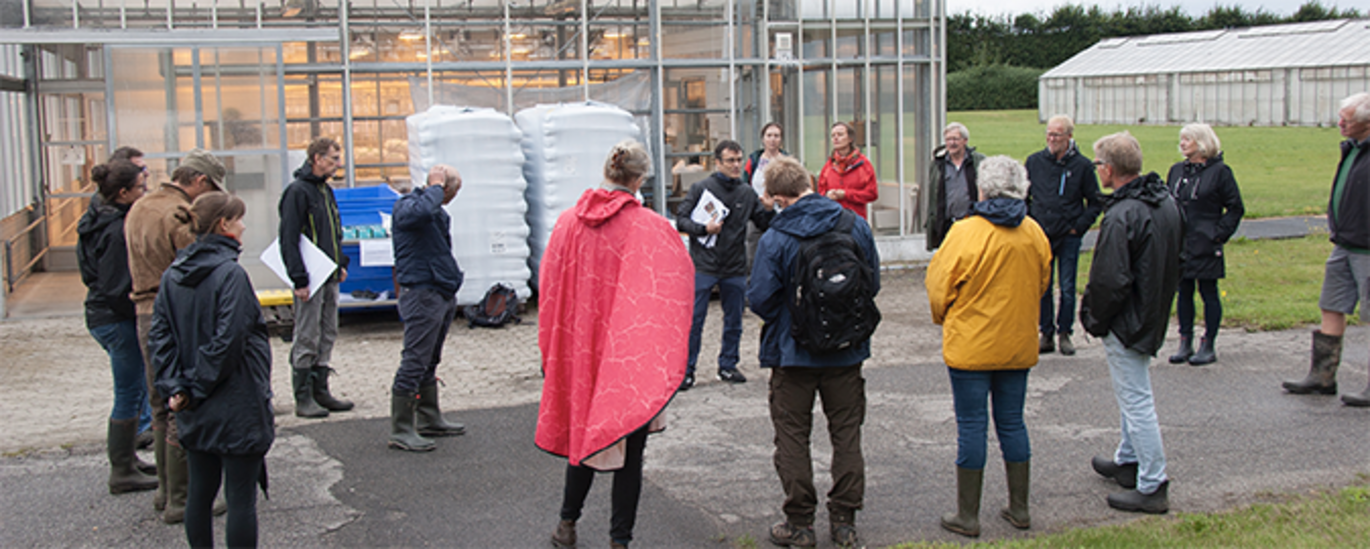Optimising organic vegetable greenhouse production in Denmark
On August 27th, 19 participants, including several organic growers, met in Årslev, Denmark, for a visit to the Greenresilients experimental site. The importance of organic cultivation in the context of the increasing demand for organic vegetables in Denmark was discussed

Greenresilient project partners from Aarhus University, Department of Food Science in Denmark hosted an experimental site visit August 27th. Challenges for producers of organic greenhouse vegetables were discussed. In the view of participants, the main challenge within new European regulation is the restricted use of isolated beds and the restriction of nitrogen (N) fertilisers, not more than 170 kg of nitrogen per ha. The farmers in attendance considered this N level very low and discussed the potential consequences to the continuation and development of profitable organic vegetable production in Danish greenhouses. Respectively, the primary motivation of the Greenresilient project is to find alternative more sustainable solutions to address the new European regulation and make the organic greenhouse production possible and profitable for growers.
In the Greenresilient project, two organic cultivation systems of tomato production are compared. The first system is a typical organic cultivation named Business As Usual (BAU), where tomato is cultivated as a long crop for ten months using organic fertilisers and heating to maintain the temperature in the greenhouse at 20 C. The second system is innovative (INN), where organic fertilisers also supply plants; however, the greenhouse is practically not heated. Tomato plants are sensitive to low temperatures; therefore, it is impossible to grow tomato crop (which require ten months for maturation) without heating. Thus, during cold months (e.g., winter, early spring, and late autumn), we used leafy vegetables as an alternative. Moreover, tomatoes in the INN system were cultivated with peas as agricultural service crops (introduced in the system to provide or enhance its environmental functions).
We found that under Danish conditions, light is the limiting factor. Leafy vegetables were hardly growing from late November until mid-February. The winter 2019/2020 was typical for Denmark with only a few hours of sun per day. Several leafy vegetables (e.g., pointed cabbage) showed very high variation between plants; thus, the conditions for good germination and seedling establishments were not appropriate. Therefore, the use of well-established seedlings can have an advantage for many crops. A few crops, like Mizuna, brown mustard, and winter purslane, can be sown with success in the presence of good seedbed preparation. Taking into account the long dark Danish winters and that light, rather than temperature, is a major limiting factor for winter vegetable production, LED lights were discussed as an opportunity to overcome this challenge.
In order to successfully adapt Danish organic horticulture to the new European regulation of organic cultivation of greenhouse vegetables, further testing of different species and optimisation of environmental conditions is suggested.
Greenresilient experimental site Denmark - www.greenresilient.net/experimental-sites/denmark.html
Greenesilient partners – AU-FOOD - www.greenresilient.net/partners/au-food-dk.html
Authors
Ivan Alekseevic Paponov, Aarhus University, Department of Food Science, ivpa@food.au.dk, https://food.au.dk/en/
Lauren Dietemann, Research Institute of Organic Agriculture (FiBL), lauren.dietemann@fibl.org, https://www.fibl.org
Editor: Karin Ullven / Design: Christine Dilling
